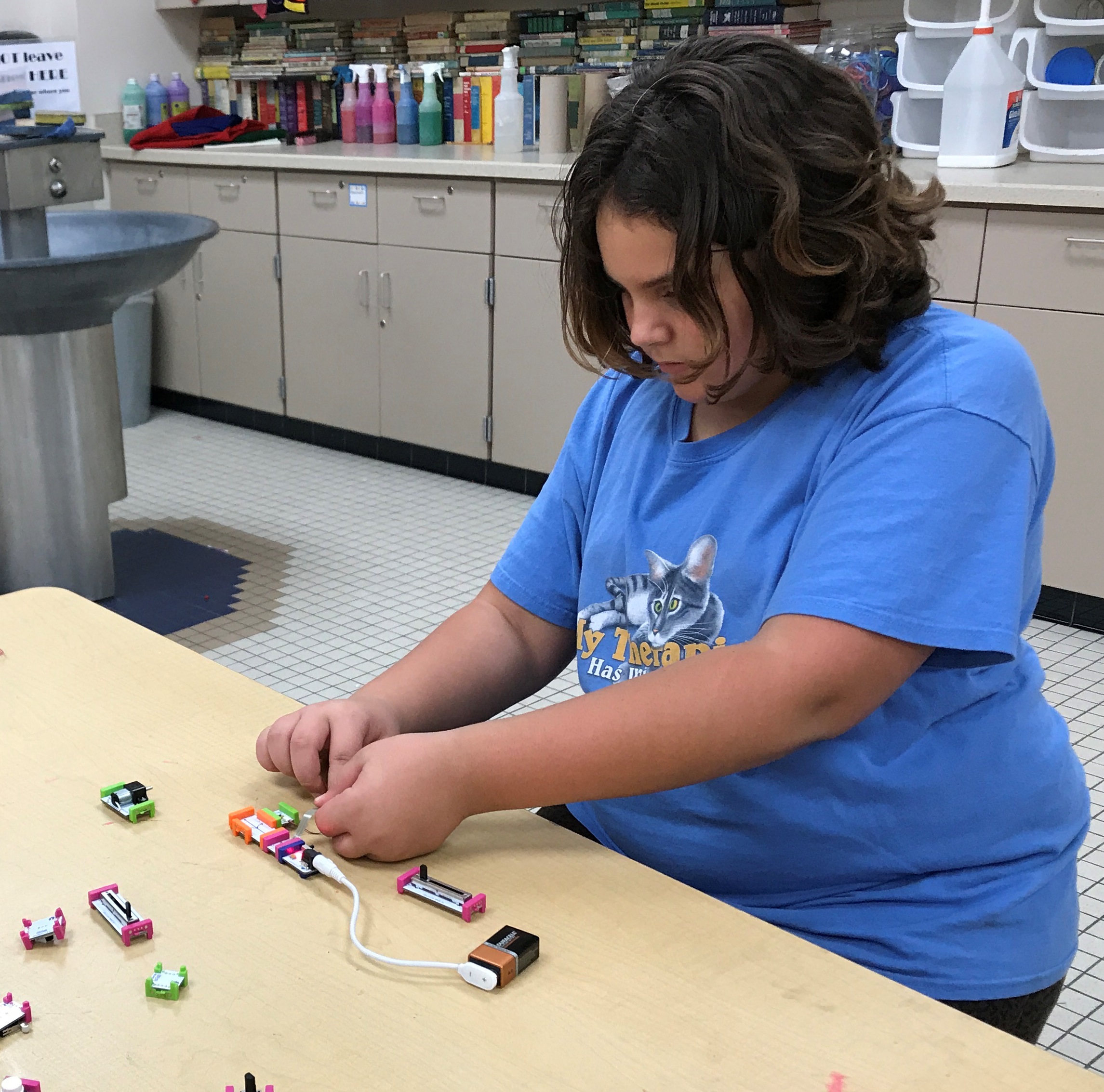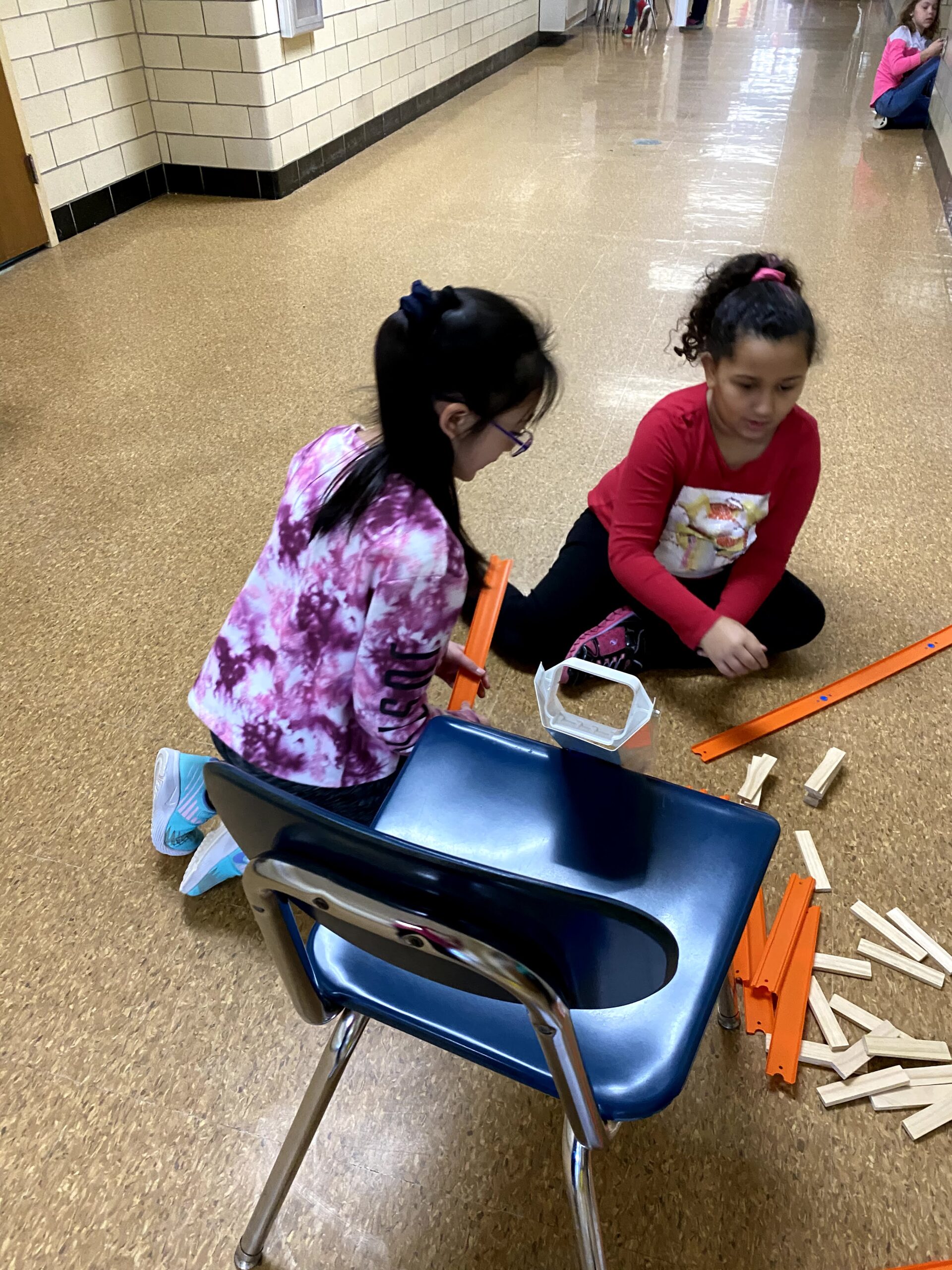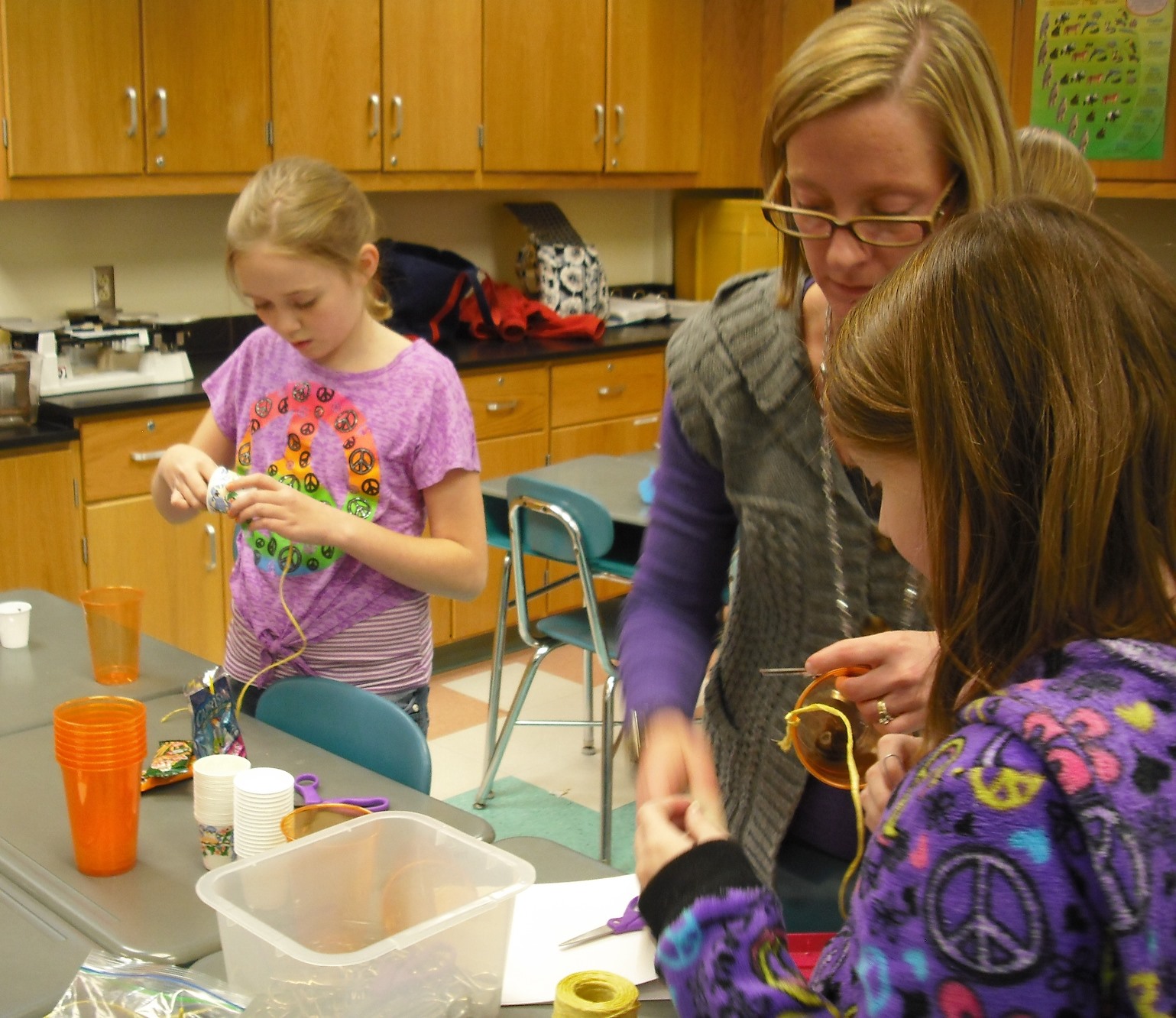Frequently Asked Questions
We receive questions through our email account gems@purdue.edu and want to share the most common questions and answers with you. If you have a question, and do not see the answer here, please contact us at gems@purdue.edu and we will be happy to help if we can.

Why do we need GEMS clubs and resources?
Since 1994 when the first GEMS club was established, we have worked to create a supportive learning environment for girls. As we have learned from our own practice and research, girls are often underrepresented in science, technology, engineering, and math classroom. There are many reasons that contribute to their underrepresentation., but the learning environment is a primary factor that impacts girls’ participation and learning in STEM.
Educational research provides evidence that girls are capable as boys in math and science. However, in a mixed STEM learning environment, girls are afraid to “lose face in front of boys” and reluctantly take risks to solve challenges or problems. In hands-on activities, boys are likely to ignore girls’ contributions or take over girls’ work which discourages girls in pursuing STEM. For example, many studies show that teachers pay more attention to boys or students who “call out” answers, rather than choosing students equitably. Other teachers may use girls as behavior management tools, requiring students to sit boy-girl so that the girls act as role models or conversation stoppers. Moreover, in science and math, some teachers hold lower expectations for girls to perform well than for boys. Girls thus have less external support in developing interests in math and science. In addition, in many science and math classrooms and curricula, activities often take place in stereotypical masculine contexts such as speed of cars and airplanes, which can be of more interest to boys than girls.
In GEMS, girls have authorship of their learning. They do not learn for the sake of teachers or exams but for themselves.
Group work with mixed genders can be problematic, particularly with science and inquiry learning, with many boys taking over the experimental work, leaving the girls to take data or serve as the “recorder” for the group. Many girls tend to hang back in mixed gender groups, thereby losing the opportunity to actively participate in the science or technology or engineering. Girls also tend to stop trying when things become difficult, thinking that they just can’t learn it. Presenting STEM as difficult does not challenge many girls; instead it makes these fields daunting and unapproachable.
Many girls come to elementary school with little or no experience with “tinkering”—building with Legos™, helping a parent repair household items or open computers, etc. Girls also may have received many spoken and unspoken messages about STEM from parents, teachers, and television that math, science, and similar fields are not for girls, are too hard or are not valued.
GEMS clubs address all of these concerns and more. When you start a GEMS club, you immediately send the message that girls can do STEM, and that they are valued as a group and as individuals. You provide a risk-free environment where there is no competition other than doing your personal best. Emphasis is on learning and having fun, not being the fastest or loudest. All girls get to do all of the activities, and all girls get to experience success. Girls leave GEMS clubs meeting excited about their experiences and eager to share their learning with others.
Why do you make girls learn this stuff?
- We don’t MAKE anybody learn anything in GEMS. We encourage, we support and we explore all of the STEM fields.
- We also believe that every child likes to learn about the world around them, and that extra-curricular clubs and experiences are an excellent way for a child to become involved in STEM learning. Girls tend to have less exposure to these fields for many reasons, and therefore tend not to choose these fields for further education or careers. Clubs like GEMS provide successful experiences in allow-risk environment, allowing girls to try new things.
What do we do if boys want to join?
Well, GEMS is for girls or for children who identify as girls . Its primary purpose is to advance the interest and expertise of girls in all fields of STEM. We would ask you to step back and review the discussion you had with your principal or school board when you started GEMS. Were they behind the mission of GEMS? Did they understand that it is a girls only organization?
Review the information on the Title IX page of the website. This is a very politicized issue right now, and while we feel that nothing in the new regulations prohibits the forming or operation of single-gender clubs, we also know that concerns may be raised.
The best thing to do is to make sure that the system is behind you in the formation of GEMS as a club for girls or children who identify as girls. If it is too late for that, and the system will not back you in maintaining as all girls, see if you can move your club off-site so that the organization hosting you is not covered by Title IX regulations.
Unfortunately, gems@Purdue is not able to participate in any kind of resolution of these kinds of concerns. We will continue to provide the resources on Title IX and will update them as needed.
How is GEMS different from other girl-focused groups?
We are all girl-serving organizations with many of the same goals. We encourage leadership and self-confidence through our programming. GEMS clubs are solely focused on developing STEM (Science, Technology, Engineering and Math) skills and interests. If you feel you need to choose between these groups, choose the one that matches your daughter’s interests and fits your and your daughter’s schedule best. Most GEMS clubs do not charge.

My daughter says she hates math. What can I do?
- It is important that you validate what she is feeling. Try not to respond with “Oh, come on. You’re good at math!” or “You used to love math!”
- Try reflecting with her, and really listen to what she is saying, and perhaps what she is not saying.
- “It sounds like you are having a hard time. Tell me what’s going on.
- “When I hear you say, ‘I hate math,’ I wonder if you are struggling with something.”
- “You hate math. (Pause) Tell me a little bit more.”
- “Sometimes we hate something only because we do not know it. We need to take some time to get to know it like knowing a new friend.”
- As students progress in math, it becomes more and more abstract. It moves from simple to complex, and from concrete and touchable to the use of variables and unknowns. But studies have shown that when girls know that they can learn math, or anything else, they will do better. In other words, you are not born with the ability to do math—you learn it, and you can learn it at any age and any grade. Everyone can do math, and the more you learn, the more fun it becomes.
- When you can, point out where in life you are using math. For example, in music, understanding time signatures and rhythm are essential. Patterns and sound frequencies use math and impact the sound and beauty of the music. Math is also an integral part of sports. Where would we be without scores, rankings, or the geometry of basketball shots and ski jumping?
- Most importantly, take a look at what you and others in the family say about math. Do the men in the family do the budgeting and the banking? Are the females role models for your daughter in the use of money or the application of math? If females don’t manage the money, do they show your daughter how they use math in cooking or quilting or gardening or another hobby or job?
Can a man be a GEMS leader?
- The flip answer to this question is, “If your school or community has no female adults who have STEM experiences or interests to share with younger girls, then perhaps you have a bigger problem that needs to be addressed.”
- We feel that it is essential that girls see women and older girls as role models in STEM undertakings. So, the answer to this question is conditional. Yes, a man can be a GEMS leader. But he should have a female partner. And ideally, GEMS clubs should have two female leaders.
- Why? Because a girl can’t possibly begin to imagine herself as a STEM professional unless she sees other girls and women doing the things she wants to do. She needs to see and talk with women and older girls with the same interests, background, and experiences she is having. She needs to know that this can be done.
- In the same vein, girls need to see women and older girls of all races, religions and cultural background succeeding in these fields in order to place herself there in the future. If you live in an area with little representation from other races or cultures, make an intentional effort to find videos and books with women from all backgrounds as role models. There are resources on the GEMS site to help you.
Will participating in GEMS help girls in school?
- Girls who participate in GEMS self-report enjoying and understanding math and science more. They also report that they enjoy sharing their learning with their families.
- Teachers who have GEMS girls in their classes report that they see the GEMS girls develop more confidence and more willingness to speak up and share their learning in class.
- Two studies of the impact of GEMS are currently ongoing and will be reported on the GEMS web site in late 2020.
Do you get college credit for GEMS?
There is no provision for credit at this time. However, participation in GEMS and similar activities should be included on college applications to show a consistent interest in STEM. High school girls can also start GEMS clubs at elementary schools, and obtain community service hours and more. We will starting high school GEMS programs in the fall of 2020.

What if I can’t find anyone to help?
- Ask, ask, ask. Ask the teachers. Ask the parents. Ask the community. Just be sure to comply with any child safety /clearance regulations required by your state to protect the club members. Ask for volunteers from professional women’s organizations such as the Society of Women Engineers, the American Association of University Women, and more.
- Do not do this alone.
- Our experience with teachers is that many teachers are eager to work on this issue—that they see what happens to girls as they mature, and the teachers want to continue to encourage girls to succeed.
Do GEMS activities/challenges meet national standards?
We do not require leaders to match their lessons to standards for several reasons. We recommend that they choose activities that are a couple of years ahead of the girls in order to make the activities challenging and to familiarize the girls with future learning. We also do not formally assess the learning; instead the club members reflect on the experience and think about how they could change it or improve it. We also feel that GEMS is not school and that we can utilize this time and energy to explore different fields and engage girls in different ways.
How do I start a GEMS club?
We recommend that you download the GEMS handbook from our website and read it over. Then, approach your local school or community facility (library, community center, etc.) and ask them if they are willing to host you. We have developed the handbook to answer most questions you may have, but we hope you will contact us at gems@purdue.edu if you need more information.
After you have started your club, we would like you to register with us at https://gems.education.purdue.edu/club-registration/ . There is no charge for anything associated with GEMS. We just want to know where you are.
How do I find a GEMS club near me?
Start with the GEMS location page on the web site: https://gems.education.purdue.edu/about-gems/locations/ .
Zoom in on the area you are looking for. If you can’t find one, or you need more information, please contact us at gems@purdue.edu and we will help you.
Is there a cost for GEMS?
We encourage GEMS clubs to be free to girls. We do not want any barriers to STEM learning for girls. Some clubs have a small supply fee. Other clubs charge due to location policies. But the hope is always that GEMS clubs start and remain free to members.
How can we fund our club?
GEMS@Purdue is not able to provide funding. However, there are many grants and possibilities out there that you can investigate. We recommend that you start with local organizations, including your hosting facility. There is a great deal of money for STEM right now, and it is sometimes hiding in plain sight. The GEMS Handbook has more information on this.
How can we pay our leaders?
GEMS@Purdue is not able to fund leader stipends. We recommend that you investigate grants and other forms of funding so that your leader can be paid. Many leaders are willing to lead GEMS clubs for free. That is a decision that your club must make. Please contact us at gems@purdue.edu if you need more information than is in the Handbook.
How can we obtain supplies for our club?
Schools and community facilities have many supplies already in place, if you are allowed to use them. Most teachers also have supplies that are stored and need to be used. But don’t count on that unless they are offered. If you do not have funding for your club, consider asking for donations of supplies. Many people are very willing to donate supplies if you are specific in what you need. Parents are grateful for the opportunity to help in small ways. Look to local businesses and service organizations for small donations. Rotary, Kiwanis, Elks—you may never have had contact with them before, but ask. Try to keep GEMS free for the girls.

What will girls learn in GEMS?
Each club chooses its own activities, planned by leaders with input from the girls. All girls will have experiences in the four main areas of STEM—Science, Engineering, Technology and Math—but the exact curriculum is chosen locally. GEMS is organized this way so that leaders have the freedom to develop both the interests of the girls in their own clubs and their own interests.
For example, one of our GEMS leaders is an art teacher. She has used GEMS to learn and share 3-D printing, circuit design with electronic ink, dyeing fabric with dye made from plants, and much more. STEM education has unlimited possibilities.
How long do the clubs last?
This is a local decision. Clubs are formed and held at the convenience of the location, including libraries, schools, community centers, museums and more. Clubs can meet once a month, before or after school, or on weekends. In response to the Coronavirus, we have developed virtual club plans to support girls at home.
What if the school won’t let us start a club?
- See if you can find out the exact reason. Do they think there will not be enough interest? Are they concerned about the single-gender mission? Do they understand the need locally and in the country and world as a whole? (More information on these issues and other statistics are on the GEMS Research page.)
- As noted in another FAQ, if the school system is concerned about the Title IX and single-gender regulations, provide them with the information on the web site and check the US Dept of Education for the latest information.
If there is no club in our school, how can I help my daughter?
- The first thing you can do is make sure she knows you support her in STEM. Follow her interests and give her opportunities to explore and learn. Take her to museums or STEM fairs or park programs. Let her invite her friends to go along.
- Secondly, make sure that you are a role model in how you speak about her capabilities and strengths. Encourage her to try, to take risks, and to develop new interests.
- Explore this site and our Facebook page for activities that you can do together, or she can do with friends.
- Download the Handbook and take it to her school to see if they will start a club. Email gems@purdue.edu for support.
I’m not good at science or math. How can I be a GEMS leader?
- In GEMS, a leader is not a teacher but a facilitator. If you are also a classroom teacher, you may need to redefine your role. If you are a parent, then you just need to show your interest and your willingness to learn. the GEMS Handbook has more information on this. In GEMS, the leader is also a learner who learns with the girls.
- And, take a look at your feelings on science and math. Are you really not good at them, or were they difficult for you and you chose other things to learn?
- And more importantly, can you communicate excitement and fun with the girls?
- The most important qualities you can bring to being a GEMS leader is that of excitement and interest. If you are interested in learning or doing something, the girls will be too. If you are afraid of it, they will sense that and be afraid also. Your attitude and actions communicate everything.
- For example, one time one of our middle school club leaders planned to dissect cows’ eyes with the girls. She had done this many times with her high school medical science clubs and felt that the girls in the club could handle it. The other leaders were very apprehensive about this. So, we all spent time learning about what was involved and watching videos so that we could assist her in leading the club meetings. The day of the club meeting, we shared our apprehensions with the girls and told them that we just wanted them to try it, and that if they felt they could not participate, they could just watch. Two girls chose to sit out, and the other girls proceeded with the dissection. By the end of the meeting, all the girls had joined in and we all felt very proud of ourselves. As part of the reflection at the end, both the girls and the leaders discussed taking risks and overcoming fears. Leaders were able to share their original misgivings and the girls were able to leave knowing that they had succeeded. GEMS is about much more than science and math.

What is your favorite GEMS activity/challenge?
There are so many things that we can’t possibly choose one. We all have our personal favorites of course, and those are here:
- Chromatography T-shirts or hats—using chemistry to dissolve permanent marker designs.
- Soldering—inexpensive equipment required, but learning this skill opens up a world of design and creativity, and it is very empowering.
- Squishy Circuits—using playdough and wires, batteries and bulbs/buzzers to light up the world.
- Taking apart electronics—all you need is goggles, tools, and a load of dead electronics to help a girl learn her power as a deconstructor.
- Product testing—comparing products using criteria you develop—teaching girls to be good consumers.
Check the GEMS site and Facebook for a continuing and changing menu of great STEM things for girls.